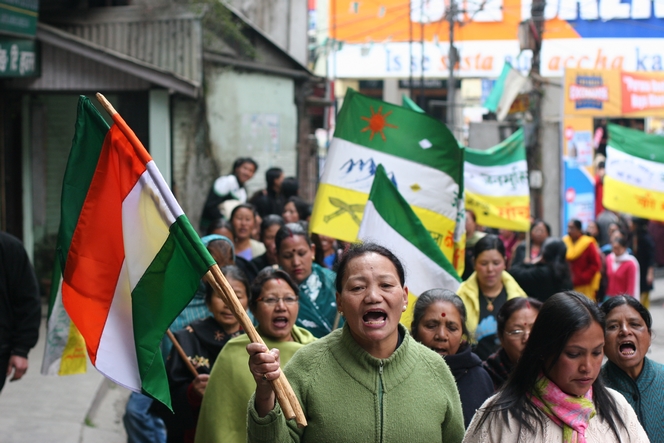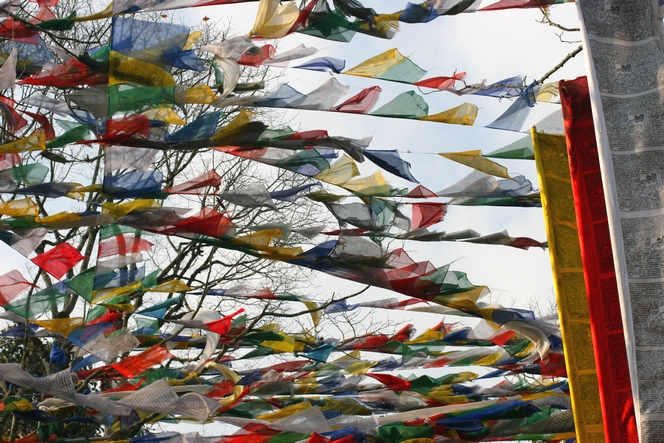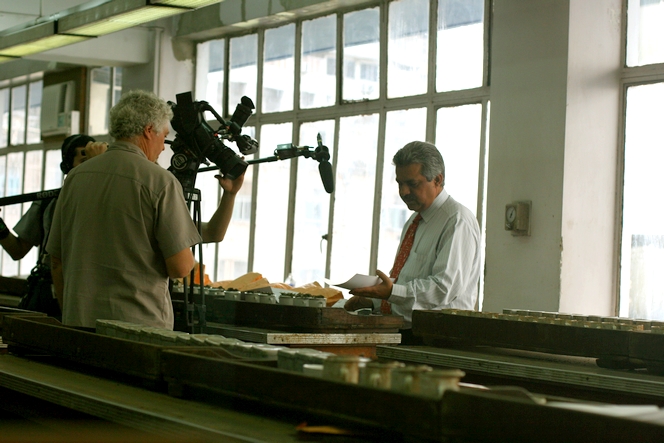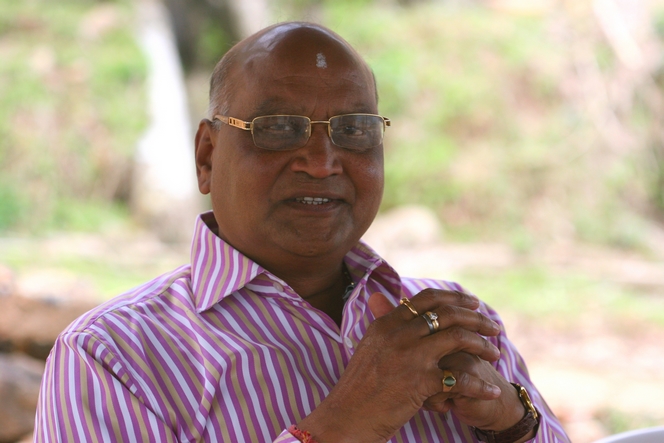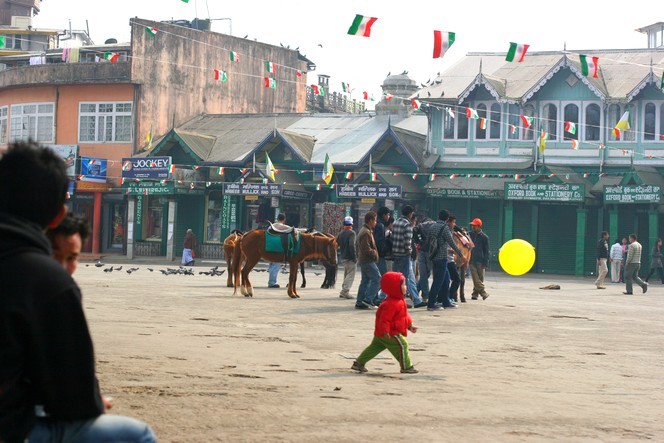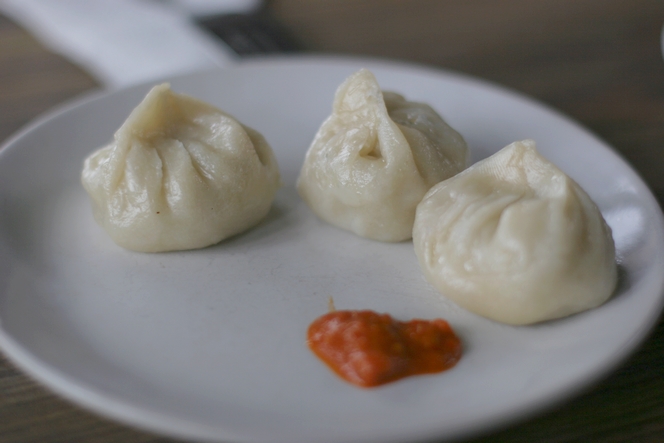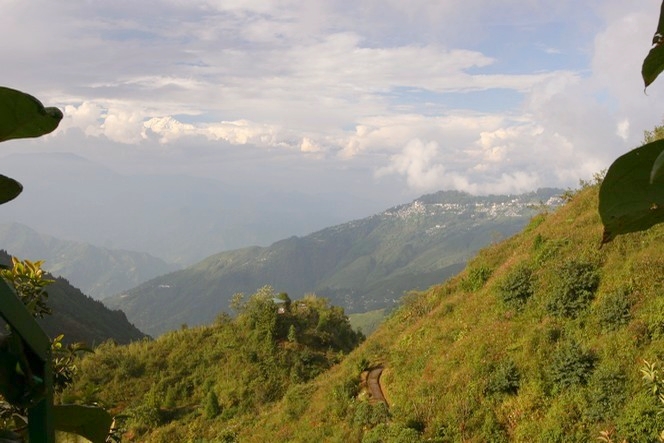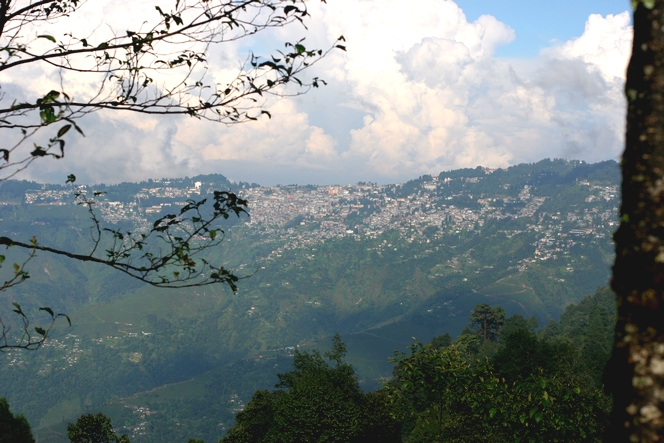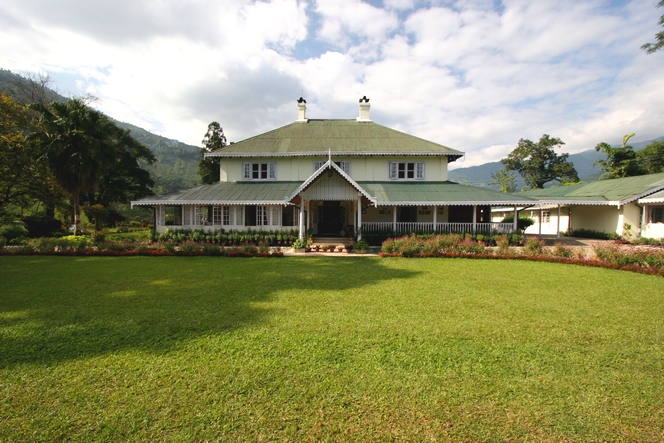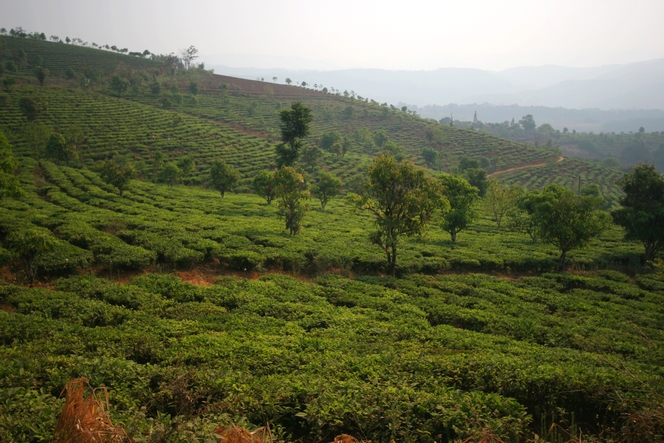There has been political tension in Darjeeling for some 30 years. While everyone agrees on remaining within the Indian Union, a large proportion of the population would like some independence, with their own Indian state, instead of being part of West Bengal as the region is today. Being a separate state, like neighbouring Sikkim, might result in better infrastructures, with direct funding from the capital Delhi instead of having to wait for aid that never comes from Kolkata. Most people in Darjeeling are Indians of Nepalese origin who would prefer to be able to make their own decisions on matters that concern them. Some have already given the future state a name which you see scrawled along the roadsides, and which is being chanted by these protesters marching in Darjeeling: “We want Gorkhaland!” You can see they are waving two different flags: the flag of the future Gorkhaland, and the flag of India, to show that they want the new state to be firmly embedded within the Indian Union.
ARCHIVE FOR 2010
In the Himalayas, people give their prayers to the wind
On Sunday, I climbed up to the temple near Chowrasta, in the centre of Darjeeling. From here, you can look out across the city. The big problem with this walk is trying to avoid the hordes of monkeys intent on stripping you of everything you have. They bare their sharp teeth if you have the tiniest piece of food in your pockets. Once at the temple, I slowly make my way around it, and sit on one of the stone benches to observe the faithful. I cannot resist raising my eyes to contemplate the prayer flags, these scraps of fabric printed with prayers or mantras. They are given to the wind in order that it may fulfil them.
I find this poetic ritual fascinating and soothing. I watch these multicoloured scraps dancing gently in the wind, rising from the earth to the sky and taking our prayers to the gods.
This Sunday at 2.45pm on France 5: “Tea for all”!
There are not many documentaries on tea, so when one comes up on television we shouldn’t miss it. As part of its Global Drinks series, France 5 is showing a documentary called “Thé pour tous” (Tea for all), this Sunday at 2.45pm. The report lasts 52 minutes, which is quite exceptional. The director Stefano Tealdi travelled through various countries including Japan, Taiwan, the UK and India, and also stopped in Paris. We met a year ago and I agreed to him accompanying me into the tea mountains. So in February, we met in Kolkata. We then took the Darjeeling route in the company of Sandro DeFrino, his camera man, and Angelo Galeano, his sound recordist.
It is not easy to travel with a TV crew in places you love, on the other side of the world. It’s a bit like being with a bull in a china shop. But with Stefano, Angelo and Sandro it was real pleasure; all of them treated everyone we met with great respect, and they showed a deep understanding of the nuances of local identities. It’s a rare thing. I was very pleased to have met them. I think we started to develop a friendship and I’m looking forward to seeing their film.
In this photo, taken in Kolkata, Stefano Tealdi, with his back to the camera, is talking to Krishan Katyal, director of the tea auctioneers J Thomas & Co. Krisham is one of the leading experts in India, and I’m sure I’ll be telling you more about him another time.
Ps: for the people who, like me, do not have the television, you can clic here http://documentaires.france5.fr/documentaires/global-drinks/pour-tous to view the programme until October 24th
Gopal Somani: an experienced grower in Darjeeling
Tomorrow I am going to visit my friend Gopal Somani. Gopal is one of the most important people in Darjeeling. He is one of the two or three most experienced growers, and his teas win the most prestigious awards. He supervises the plantations of Puttabong and North Tukvar, a vast area with altitudes that vary by more than 1 000 meters and which, in season, produces truly exceptional teas. With his high standards and attention to detail, this expert has taught and trained many Darjeeling growers over the past two decades. I myself have learnt a huge amount from him.
Tomorrow we are going to tour the North Tukvar plantation together, and taste his recent teas. Then I am invited to lunch at his bungalow. And if I mistakenly use my fork to eat instead of my right hand alone, as is customary in India, he will make his habitual remark: “Why are you using your false hand to eat when the gods gave you a real one!”
Chowrasta, the heart of Darjeeling
Darjeeling’s main square, its centre, its heart, is called Chowrasta. You have to come here on Sundays to realize how popular it is. People come from all the surrounding mountains around, they travel for several hours to spend part of their afternoon there, sitting on one of the numerous benches, sipping the famous spicy chai tea. It’s easy for an experienced eye to distinguish by their costume Sikkimese from Nepalese women, Tibetans from Bhutanese and Indian tourists, often from Kolkata, who are cold here and put a scarf around their head, with a knot on top of it, just like an Easter egg. As for the kids, people hoist them on one of the numerous horses for a nice ride on the Mall.
It wasn’t very warm this morning on Chowrasta, at a time when shops start opening, the time of the first onlookers, hands in their pockets. At a time when you have the whole space to play when you have such a nice yellow ball like this!
In Darjeeling, momos are one of my favourite recipes
When I’m in Darjeeling, momos are one of my favourite recipes. For those who aren’t familiar with Himalayan typical food, it’s a steamed pastry filled with vegetables (“veg momos”) or minced chicken (“chicken momos”). As you can see, momos actually look quite similar to the Chinese Dim Sum.
Even before arriving in Darjeeling, when I’m on my way, I stop at the Tourist Lodge in Kurseong to eat a full plate of them. In Darjeeling, two famous Tibetan restaurants you could mistakenly take for greasy spoons, the Dekeva’s and the Kunga, have it as their specialty. A delight. Here are two recipes if you are interested, proportions change of course whether you serve them as an entry or as a main dish:
– Vegetarian momos (recettespourtous.com)
– Meat momos (Elle à table)
It goes without saying that you’re free adapting these recipes according to your tastes, replacing one meat by another, choosing different vegetables, overdo it with ginger. And adding chili to the tomato sauce to rouse the momo and make you, just by itself, imagine you here in Darjeeling!
Which tea to drink with it, you’ll ask me. I suggest a salted butter tea, ideally yacht butter, that you’ll have previously let go rancid just like Tibetans do.
The Kanchenjunga overhangs Darjeeling
You have to admit that Darjeeling’s urbanization was very quick and not very well under control. As a result, noise, traffic jams, a lack of water and a waste management not very much enviable. But a few meters further, nature takes up and you come across breathtaking landscapes. Here I’m looking towards the West at these mountain folds forming what we call the Himalayan foothills. They’re not considered to be high mountains yet, but if you look well between the clouds, if you’re observant, you might notice this magnificent peak: let me introduce you, Ladies and Gentlemen, the third highest peak in the world, the Kanchenjunga!
Darjeeling or “the stormy country”
“Darjeeling” both refers to the tea plantations stretching out on thousands of hectares and the city you can see on this picture and where from I’m writing to you today. It’s a large town of hundreds of thousands people, or, in other words, a village on an Indian scale. It’s located at an altitude of 2100 meters and here you can see it under a rather mild sky if you consider that in Tibetan “Darje Ling” means “the stormy country”. The city is on a slope and when you walk around it, you actually spend more time climbing the narrow stairs snaking in and out the houses than crossing leaning streets. Tea is all there is, to such an extent that people don’t know where to build houses anymore, yet necessary to provide accommodation for an increasing population.
In Tumsong Tea Estate : a wonderful bungalow
I’m leaving for Darjeeling in a few days. A long trip, hours of plane and four wheel drive. But I go through these hours smoothly as I’m so happy to see these mountains again. Once a year I take with me several people working for Le Palais des Thés. This year Fabienne, in charge of Le Palais des Thés in Lille, Stéphanie from Grenoble, Maud from Paris’ rue-Vieille-du-Temple are coming with me among others. I’ll soon introduce them to you.
We are first staying at Tumsong Tea Estate, an organically certified tea plantation of Darjeeling which has such a British cottage (photo) ! It’s a real pleasure to live in such a great house, nestled in the mountains as it is and exquisitely comfortable. All the more so as Rajiv Gupta, the plantation’s manager, keeps an eye on everything and is very concerned of your well-being. We visit his property together, from the factory to the nursery, without forgetting the river’s edge where it’s nice having a picnic.
These very British cottages are very common in Darjeeling: in each plantation the manager has a similar building, only the size and the style sometimes differ. You can easily stay there in Tumsong if you wish to as contrarily to most plantations, here tourists interested in tea are welcome for one or several nights (www.chiabari.com).
We are also thinking of organizing classes included in Tea School program. Anyone interested?
Deforestation: in Yunnan the danger is understood
Tea growing has massively increased in Yunnan over the past 40 years. At the time, it was decided to step up production and increase the cultivation areas. And things moved very quickly, like often in China. In a very short time, all the trees were chopped down and not a single one was left. And if the mountains were left in place it’s only because they were not causing any trouble. As you can imagine, the landscape underwent a major transformation: as far as the eye could see, there wasn’t a single copse, not a single tree top, not a single cluster of trees. Just tea plants, wherever you looked.
The result was not only staggering to the eye, but it also had an effect on the soil. Rain became scarce and erosion increased. The result of this large-scale deforestation and years of drought was that yields tumbled.
But the Chinese know how to adapt quickly when needed. So as soon as they realized the gravity of their action, they began replanting trees. It now gives us this lovely landscape, somewhere between Jinghong and Menghai. Note the young trees here and there, bringing shade and humidity to the tea plants and pleasing the eye.

